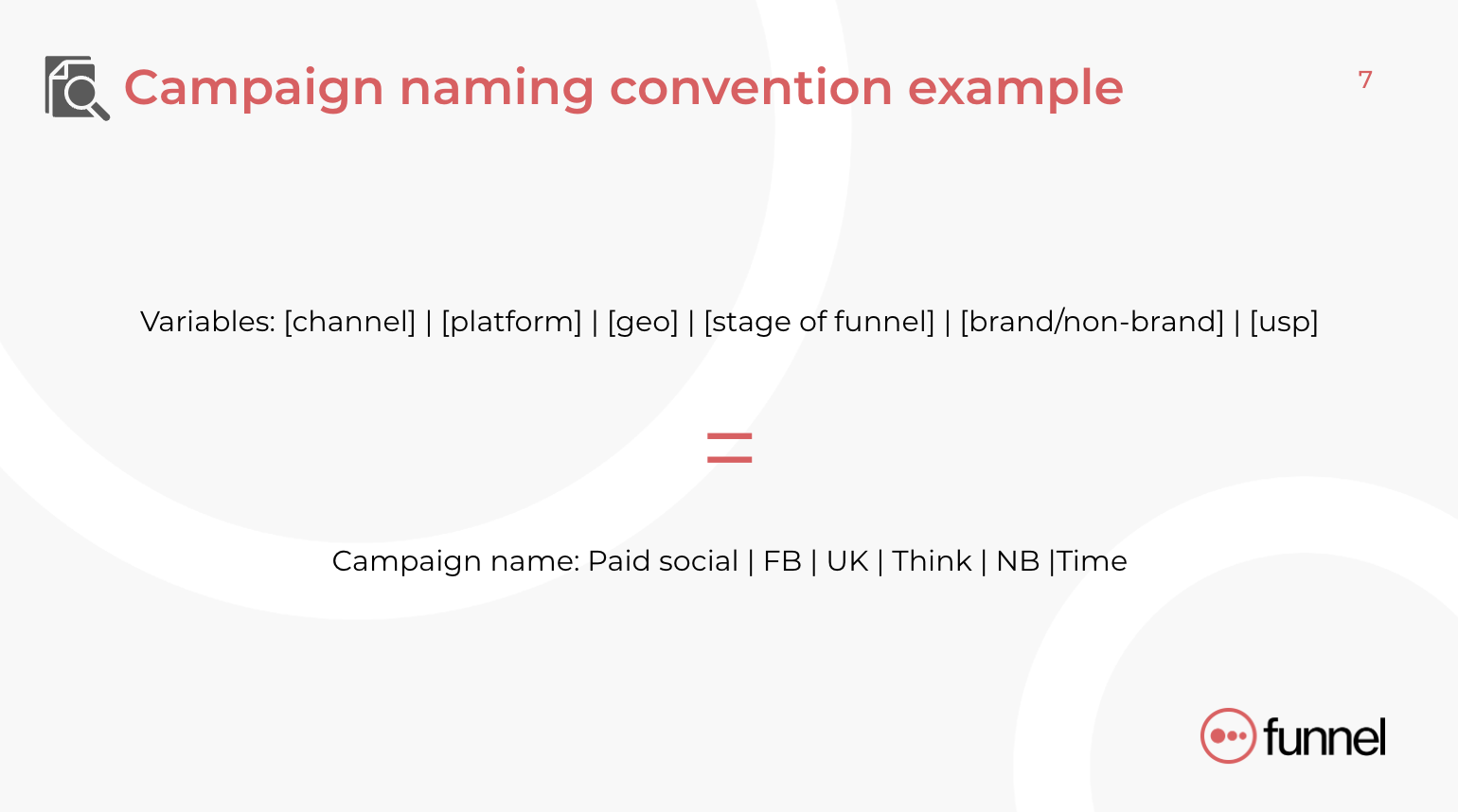What are campaign naming conventions, and how should you wrap your head around it? Learn here why naming conventions help marketers be data-driven and how to implement them consistently.
Why campaign naming conventions are important for being data-driven
When marketers name campaigns, they typically only consider the ease of identifying them in a platform to easily separate campaigns at first glance.
Getting a complete picture of your marketing activity is essential if you want to be more data-driven. It enables you to do more with your marketing data, like analyzing campaigns from different platforms.
To see your campaigns together in one place ready for analysis, you need to take action before launching campaigns. Thinking ahead prepares your campaigns for a step commonly referred to as data transformation.
This step organizes data, in this case, groups campaigns together based on, you guessed it, variables included in your naming conventions.
Understanding naming conventions with an analogy
Imagine grouping four decks of cards into suites; it’s relatively easy because each suite has a unique color-coded symbol.
But now, imagine if each store had its own symbol - for each suite. Now your four decks of cards each have a different symbol for clubs or spades, meaning you would likely struggle to group them, and if you could, it would certainly take you some time.
Implementing consistent naming conventions
By implementing consistent naming conventions, you can collect clean data - data that's ready to be prepared for analysis. The analysis will help you determine what is driving performance, so you can report on it and make optimizations to get more return for your marketing spend.
If you want to read more about campaign naming conventions, our VP of Marketing, Juuso Lytikka, has a detailed blog article.
Naming convention example

How to implement naming conventions with Funnel
So you've been inspired and you're ready to clean up your data with a clear naming convention approach. Good news! Funnel can do that on our free plan. Our naming convention feature is available under "Organize" in the Funnel app.

